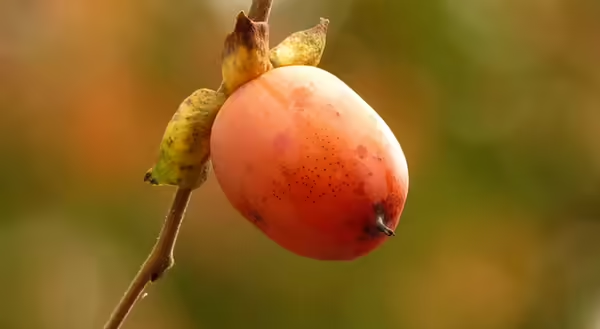
Beat the winter blues with visions of gardening
Around the time of the Winter Solstice, our family dreams of spring planting to cope with shorter days and long winter nights. Visions of a garden filled with tried-and-true crops (tomatoes, peppers, and sunflowers) coalesce with my family’s tenacity to grow new, unusual, or uniquely delicious crops. Every year, we add at least one species in the garden that is completely new to us; for 2024, we selected American persimmon.
A native tree
Native to rich river bottomlands of the southern half of the United States, American persimmon (Diospyros virginiana) is hardy to zone 5; Central Illinois is its northernmost natural range. A 35 to 60-foot-tall tree, native (or common) persimmon grows best in ample sunlight with some tolerance for shade, according to Penn State Extension.
An unusual fruit
The distinctly flavored fruit carries a hint of spice and is more powerfully flavored than the larger persimmon gaining popularity in the culinary world—Japanese persimmon (Diospyros kaki). The fruit’s flavor progresses from overwhelmingly bitter, when underripe, to sweet and custard-like when ripe. Rich in fiber, vitamins A and C, and antioxidants, this native fruit is a nutrient powerhouse.
A cultivar for every yard
If planting the tree for its edible fruit, consider cultivars with an improved fruit flavor and texture: ‘Prok’, ‘Killen’, ‘Claypool’, ‘Dollywood’, and ‘C-100’ are recommended cultivars, according to University of Kentucky Extension. Plant two cultivars with similar flowering and maturity dates to ensure successful pollination and fruit formation.
Planting at home
For home cultivation, trees should be planted in moderately well-draining, slightly acidic soil. With a deep taproot, this native tree is drought tolerant but difficult to transplant. Carefully select a planting site and establish the tree when young; then water regularly the first few years to ensure healthy establishment. Because American persimmons are native to our region, a well-established, healthy tree will be a long-lived addition in your backyard.
Benefits beyond beauty
Beyond their practical benefits, persimmon trees have historically contributed to the health and well-being of people and animals that resource it. Indigenous Americans used the fruit for medicinal purposes but also found the flavor quality as an excellent source of natural sweetener. Across its range, the American persimmon is a larval host to more than 45 species of moths and butterflies. In modern times, the tree remains a source of insect habitat while also contributing an aesthetic value in the garden with glossy green foliage and vibrant, orange-hued fruit.
My family and I are drawn to American persimmon for its environmental benefits, ornamental character, and late-season fruit. We find the holiday table a perfect place to feature a cornucopia of home-grown fruits and vegetables in traditional, or uncommon, desserts. Our exploration of unorthodox desserts has led us to love green tomato pie and paw paw bread, but a new year brings a new fruit. As we ring in the new year, it will be the year of the persimmon featuring persimmon pudding!
ABOUT THE AUTHOR: Nick Frillman is a local foods and small farms educator serving Livingston, McLean, and Woodford Counties. A fourth-generation graduate from University of Illinois, Frillman has a B.A. with a double major of Political Science and Spanish and a M.S. in Crop Science with a focus on crop production. Before joining Illinois Extension, Frillman completed a field season of CSA and farmers’ market-style production at a small “beyond-organic” vegetable farm in Sandy, Oregon.
ABOUT THE EDITOR: Liz Repplinger is an agriculture and natural resources program coordinator serving Livingston, McLean, and Woodford Counties. A Bloomington-Normal native, Liz earned a B. A. and M.S. in Animal Science from Illinois State University. She has enjoyed contributing to the multiple facets of Extension including previous support of the 4-H Youth Development Program as a program coordinator and current support of Unit and Statewide Diversity, Equity and Inclusion Initiatives.